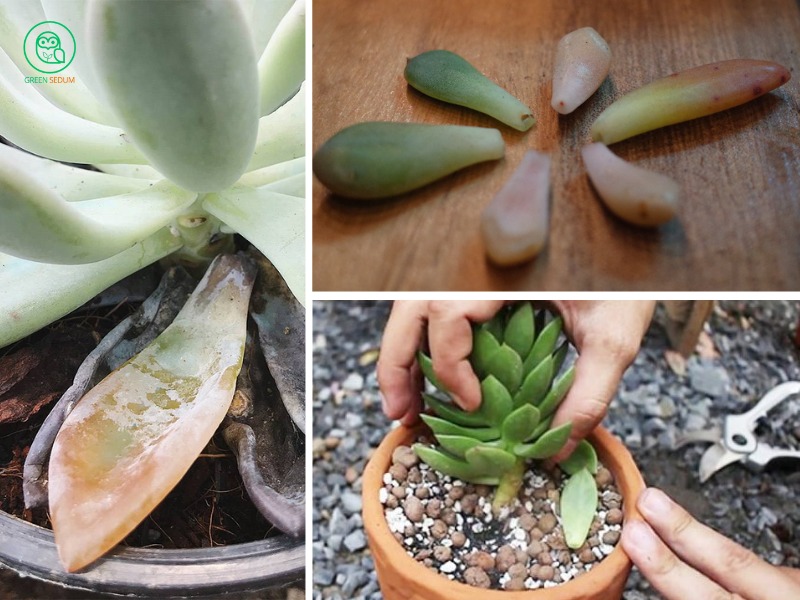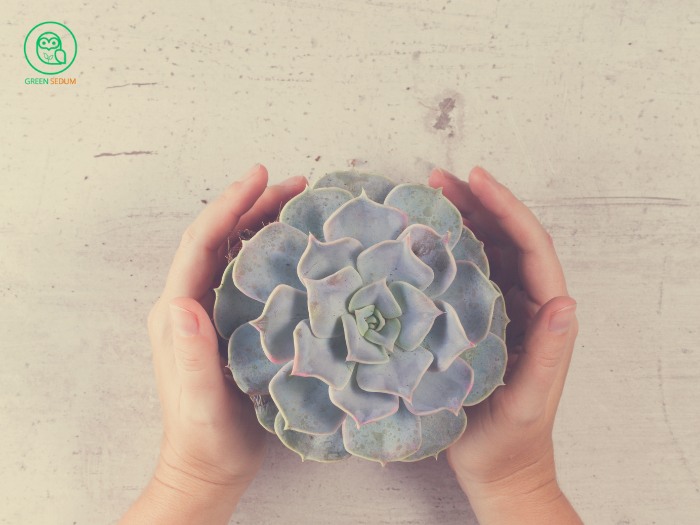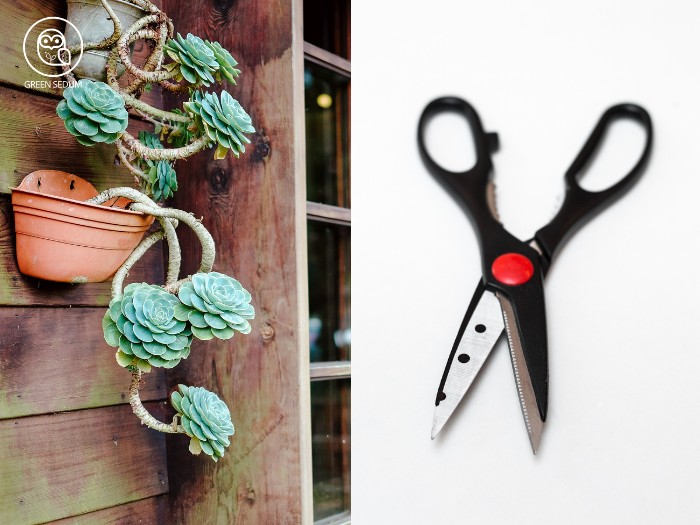Have you ever noticed your succulent leaves falling off unexpectedly and wondered what happened? As a long-time succulent grower, Green Sedum understands that this phenomenon can be not only concerning but also leave many succulent enthusiasts feeling confused.
But don’t worry! Understanding the underlying causes is key to keeping your plants healthy and determining which leaves are strong enough to propagate and which fallen leaves show signs of disease that need addressing.
Let’s delve deeper into these causes and explore timely solutions to protect your plants, ensuring your succulent garden stays lush and vibrant year-round!
>>> Find out more: The Ultimate Guide on How to Care for Succulents at Home
1. How to Identify Which Succulent Leaves Falling Off Can Be Propagated
Fallen succulent leaves can occur for various reasons, such as transportation, watering issues, repotting, or changes in soil. When you notice succulent leaves falling off, you might immediately think about using them for propagation, hoping to grow new plants or simply not wanting to waste them. You often see on social media or in “succulent lovers” groups that everyone claims they can propagate successfully, but maybe you haven’t had the same luck.
To gain a better understanding of propagating leaves, be sure to carefully follow the step-by-step guide below.
1. Know What You’re Propagating Most types of succulent plants can be propagated from leaves and stems. If your leaves aren’t falling off due to issues like transportation, underwatering, overwatering, repotting, or soil changes, you can proactively harvest leaves for propagation. To ensure success in this process, make sure the plant has received enough water and nutrients from the soil. Water the plant about 2-3 days before harvesting the leaves; this will help the plant be strong enough to develop new shoots and a robust root system.
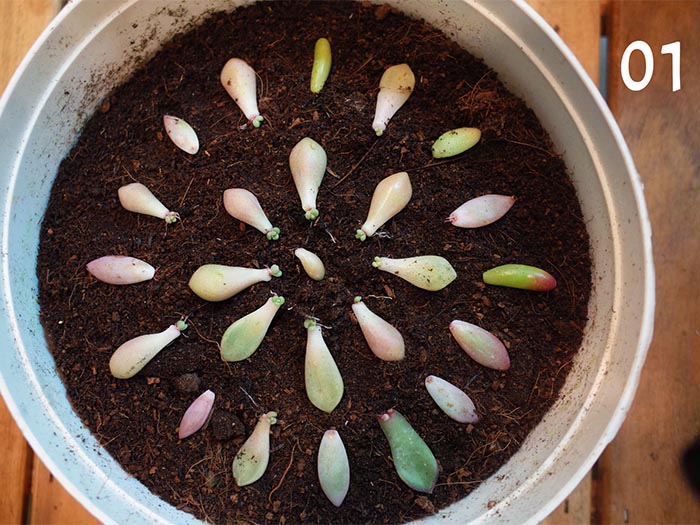
2 & 3 Healthy Leaves for Propagation
Healthy leaves for propagation are those that have a clean break right at the base (near the stem) and still retain their plumpness.
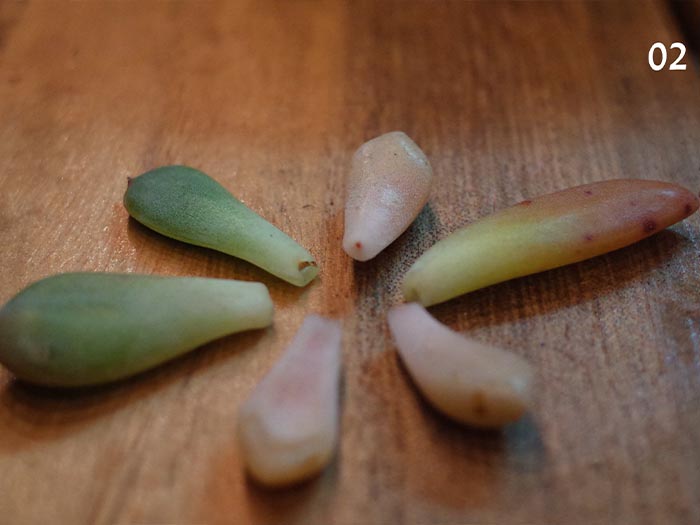
4. Quality of Leaves
Leaves that are wilted, old, or have been broken off horizontally and not at the base will not be of sufficient quality to develop into new plants.
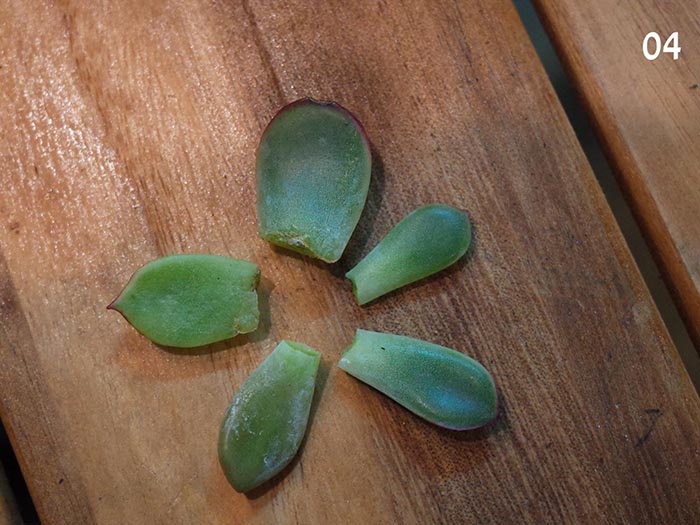
5. Strong Leaves for Propagation
These are healthy leaves that can be used for propagation and will develop into new plants.
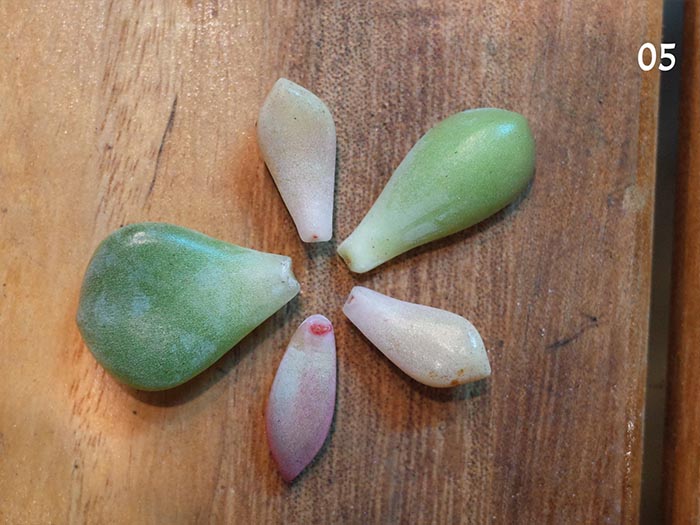
6. Unhealthy Leaves
These leaves have suffered from overwatering, wilting, or lack of water and nutrients, making it impossible (or very difficult) for them to develop roots and support new growth.
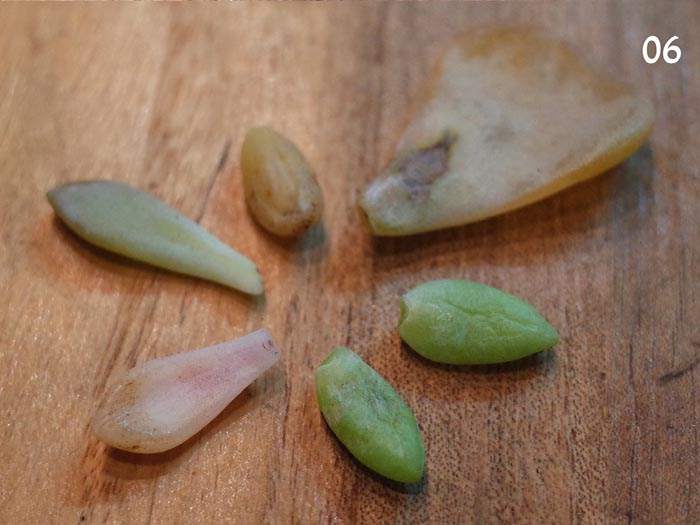
7. New Roots and Growth
These leaves have already developed roots and are growing into new plants, but due to a lack of necessary moisture to sustain their growth, the roots have become dry and struggle to develop fully.
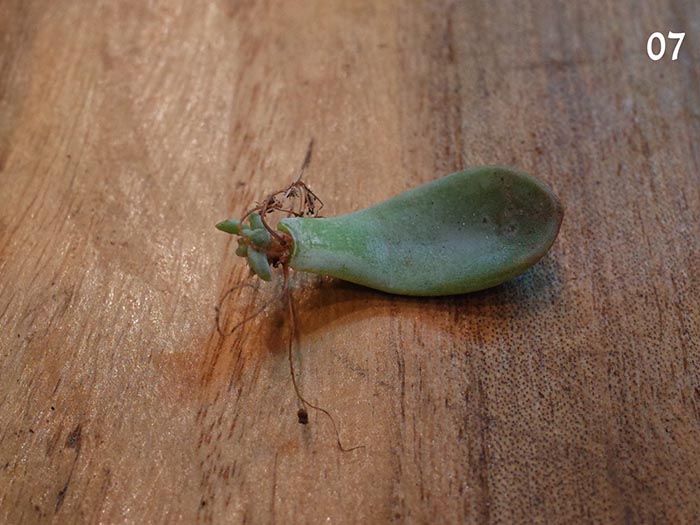
8. Propagating Leaves
After removing the leaves, you can lay them flat on the soil surface or in a pot, avoiding inserting or burying the leaves in the soil as this can easily cause the leaves to rot. Place the tray of leaves in the coolest spot possible (just don’t put them in the refrigerator). When propagating leaves this way, it’s best to mist them with a spray bottle about every two days to keep the moisture level up. Once the leaves are detached from the stem, they no longer receive nutrients, and a lack of moisture can cause them to wilt and struggle to develop roots or new plants. If the leaves dry out too much, they will die.
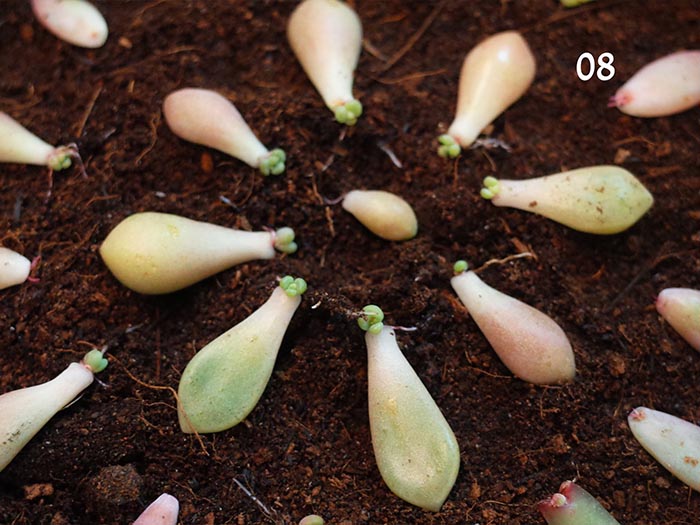
In about 1 to 2 weeks, the leaves will start to grow new roots, and if the roots are strong enough, the new plants will gradually appear. If you notice that the new plants have developed several roots but are still being nourished by the leaves, it’s best to leave them as they are. Don’t rush to separate them, as they will grow better by continuing to receive nutrients from the old leaves. Only separate the new plants for replanting when the old leaves have completely dried out.
In addition to identifying leaf drop on the plant itself,
succulent leaves falling off can also be a result of disease. Leaf drop in succulents can occur due to various factors, such as overwatering, underwatering, improper lighting, or even pest infestations.
>>> Learn more: How to Revive a Succulent – Proven Techniques for Bringing Plants Back to Life
2. Other Causes of Succulent Leaves Falling Off and How to Fix Them
2.1. Overwatering
One of the main reasons for succulent leaves falling off is overwatering, which leads to root rot. Signs include soft, translucent leaves and a wilting plant. To avoid this, use well-draining soil and allow it to dry completely between waterings.
Solution: Proper watering is crucial for succulents. Allow the soil to dry fully between waterings and water thoroughly when you do. Typically, water succulents every two to three weeks, but adjust based on climate and season.
2.2. Underwatering
Underwatering can also cause succulent leaves to fall off, leading to shriveled, dry leaves. Apply the “soak and dry” method to keep the plant healthy and prevent leaf drop.
2.3. Improper Lighting
Too much light can cause sunburn, while insufficient light can make the plant stretch and weaken. Place succulents in indirect light, near south or east-facing windows.
Solution: Succulents need ample light to thrive. Indoors, place them near south or east windows for indirect light. Outdoors, provide morning sunlight and shade in the afternoon to avoid sunburn and stretching.
2.4. Poorly Draining Soil
Succulents require well-draining soil; regular potting soil retains too much moisture. Use a specialized soil mix for succulents, including sand, perlite, or pumice.
Solution: Choosing the right soil mix is essential for the health of your succulent. It’s recommended to use a mix of 50% potting soil and 50% inorganic material like perlite or pumice. You can also create your own mix by blending potting soil, coarse sand, and perlite to ensure good drainage and prevent root rot.
2.5. Pests
Pests like mealybugs and spider mites can also lead to leaf drop. Check for insects, spider webs, and treat with insecticidal soap. Improving air circulation can help prevent diseases.
Solution: Regular inspections are essential for maintaining the health of your succulents. Check your plants weekly for unusual signs, such as yellowing leaves or pests. Early detection allows for problem resolution before it becomes severe, and simple maintenance will help your succulents thrive.
>>> Check out related posts:
- How to Get Rid of Gnats on Succulents: Proven Control Methods
- Effective Solutions for Managing Mealybugs on Succulents
- Understanding Powdery Mildew on Succulents: Causes and Solutions
3. Conclusion
Succulent leaves falling off can occur for various reasons. Through this article, Green Sedum hopes you can identify which leaves need to be removed and which can be used for propagation, thereby minimizing situations that may lead to disease or even death of the plant. Thank you for following along! If you found this helpful, please share it with others!
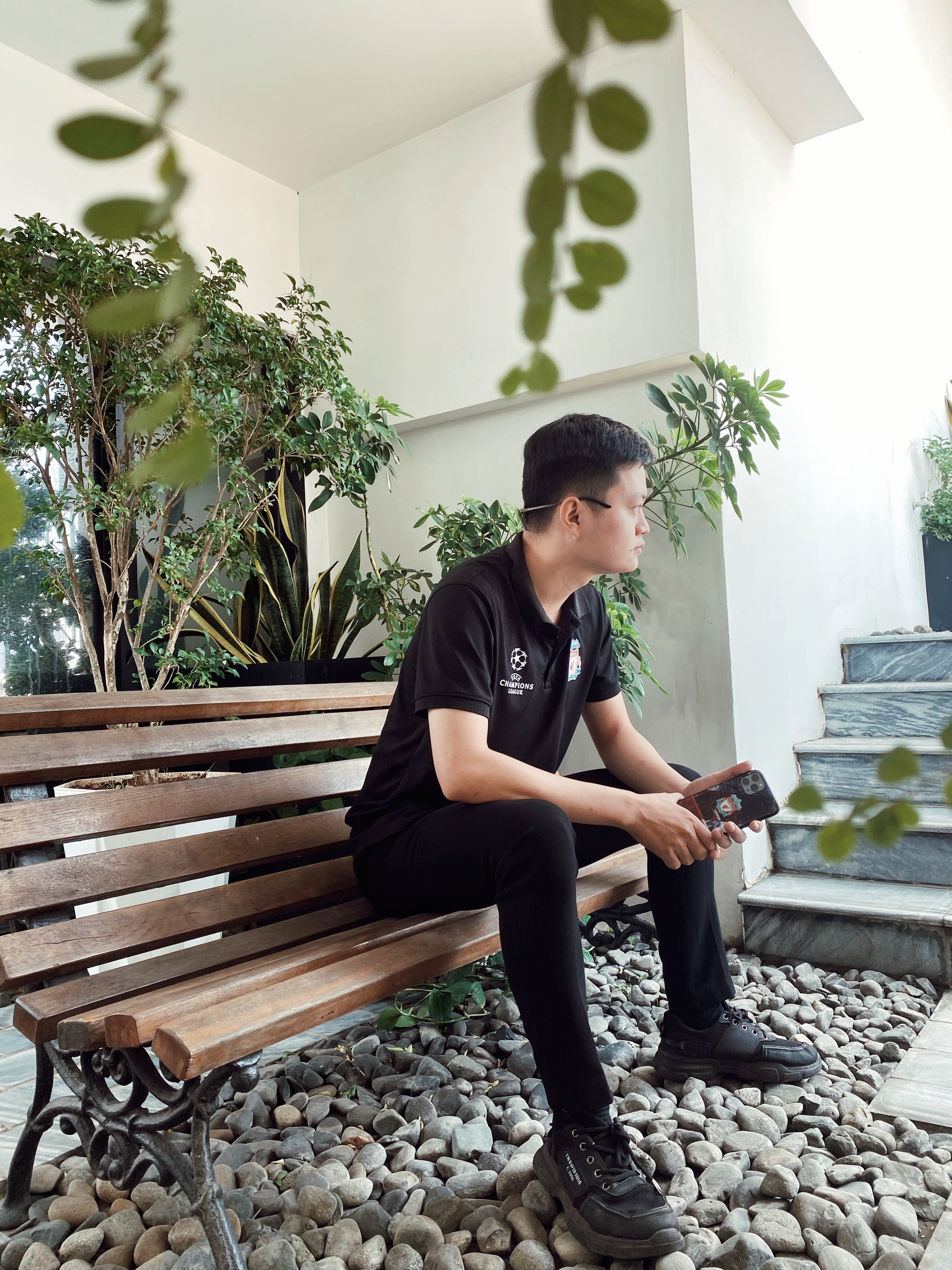
I’m Will Bernan, a gardening enthusiast with over 9 years of experience in succulents, indoor plants, and sustainable living. I also manage SEO for eco-friendly textile brands, promoting fabrics like bamboo and organic cotton.

